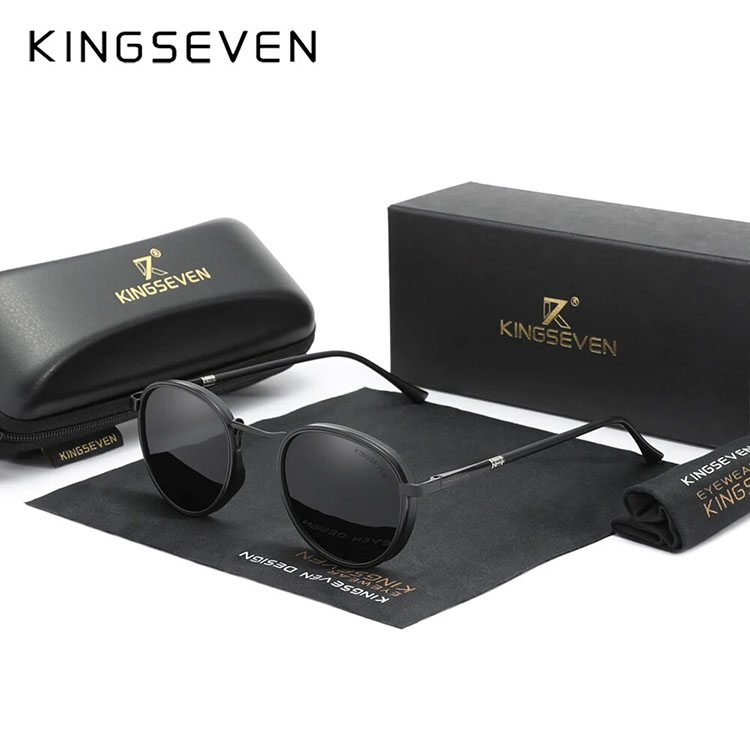- English
- Español
- Português
- русский
- Français
- 日本語
- Deutsch
- tiếng Việt
- Italiano
- Nederlands
- ภาษาไทย
- Polski
- 한국어
- Svenska
- magyar
- Malay
- বাংলা ভাষার
- Dansk
- Suomi
- हिन्दी
- Pilipino
- Türkçe
- Gaeilge
- العربية
- Indonesia
- Norsk
- تمل
- český
- ελληνικά
- український
- Javanese
- فارسی
- தமிழ்
- తెలుగు
- नेपाली
- Burmese
- български
- ລາວ
- Latine
- Қазақша
- Euskal
- Azərbaycan
- Slovenský jazyk
- Македонски
- Lietuvos
- Eesti Keel
- Română
- Slovenski
- मराठी
- Srpski језик
What Are The Different Types Of Glasses Lenses?
2025-04-27
Choosing the right eyeglass frames is important, but choosing the right lenses is also critical. Have you fully informed yourself about the different types of glasses lenses for your health? So what are the common eyeglass lens materials, and which ones are better?
In daily life, many people often wear glasses, but have little understanding of how to differentiate and choose right lenses for themselves. Today, we sunglasses manufacturers will categorize the most important part of glasses – the “lenses” – into common materials and compare their pros and cons. Doing this will help you easily select the right, comfortable lenses when ordering glasses in the future.
1. Types Of Lens Materials
(1) Resin Lenses
Resin lenses are one of the most commonly used lens materials today. Resin is a polymer compound that softens when heated and people can mold it. Manufacturers make resin lenses by chemically synthesizing resin material and processing it into lens form through grinding and polishing.
Advantages of Resin Lenses:
Resin lenses have clear advantages. Lenses made from resin are lightweight so wearing them is more comfortable. Resin lenses also have strong impact resistance so they are not easy to break which is safer. Additionally, resin lenses have good light transmittance and are easy to reprocess to meet special needs, they are inexpensive, so they have become the mainstream lens material on the market.
Disadvantages of Resin Lenses:
Resin lenses have worse scratch resistance and chemical corrosion resistance on the surface compared to glass, and their surface is easy to scratch. Resin also has higher water absorption than glass. Manufacturers can improve these disadvantages through coating methods. The fatal flaw is resin has a high thermal expansion coefficient, poor heat conduction, and low softening temperature, which can easily lead to deformation and impact optical performance.
(2)CR39 Lenses
CR39 is an abbreviation for allyl diglycol carbonate, also known as Columbia resin or ADC resin. It is a thermoset material and the most widely used resin for producing regular plastic lenses.
Advantages of CR39 lenses:
CR39 also has the advantages of being easy to tint, impact resistant, and chemically stable. It was developed by PPG in the United States in the 1970s, and rapidly gained popularity. China started producing CR39 lenses in the 1980s. Lenses made of this material are best suited for vision correction for middle school and elementary students, children, as well as safety goggles and reading glasses. But for stronger prescriptions, high refractive index resins may be used instead due to thinner lenses.
Disadvantages of CR39 lenses:
CR39 is not as scratch resistant as glass and needs anti-scratch coatings. Resin lenses can be pattern pressed to create the curvature, making them well-suited for production of aspheric lenses.
(3)Glass Lenses
Advantages of Glass Lenses:
Glass lenses are lenses made from optical glass. They have slightly higher clarity than resin lenses, and also have relatively high refractive indexes. The highest refractive index used for lenses is 1.9. In addition, the glass lens surface is very hard, making glass lenses more scratch and wear resistant than lenses of other materials.
Disadvantages of Glass Lenses:
Due to the material, glass lenses are quite heavy, which affects comfort to some degree when wearing them. Plus glass itself is prone to shattering, especially as resin lens production technology and techniques have improved over the years, glass lenses have become less and less common recently.
(4)Polycarbonate Lenses
Advantages of Polycarbonate Lenses:
Polycarbonate lenses are also called “space lenses”. Their chemical name is polycarbonate (a thermoplastic material). Polycarbonate lenses are tough and shatter-resistant, which can effectively prevent lens breakage during intense sports. So they are also called safety lenses. At the same time, PC lenses are lightweight and have good UV protection. Therefore, PC lenses are mainly used in sunglasses and sports glasses.
Polycarbonate glasses Lenses
Disadvantages of Polycarbonate Lenses:
The surface of PC lenses is easily scratched, and they are expensive, difficult to process, and have less than ideal dispersion control. Therefore, PC lenses only have a small share of the consumer market.

(5)Nylon Lenses
Nylon lenses mainly use the material TROGAMID CX – special transparent polyamide (commonly known as memory nylon), and are mostly used in sports brand sunglasses and high-quality sunglasses.
Advantages of Nylon Lenses:
Nylon lenses have high elasticity and excellent optical quality. They have extremely strong impact resistance, are very lightweight, about one-tenth the weight of the same volume of glass, and only half the weight of traditional resin lenses. As a thermosetting material, nylon can be recycled and processed into other industrial products, giving it renewability.
Disadvantages of Nylon Lenses:
Nylon lenses have poor scratch resistance. The lens surface needs a hard anti-scratch protective film for better durability in use. The lenses also have relatively poor workability, requiring professional processing equipment and technicians.
(6)AC Lenses
Both PC and AC lenses are resin lenses, they just have different manufacturing processes. The difference is that PC lenses are harder while AC lenses are softer. AC lenses are also called acrylic lenses. They have excellent toughness, are lightweight, have very high light transmittance, and good anti-fog properties.
Disadvantages of AC Lenses:
As a type of resin lens, AC lenses share the disadvantages of high thermal expansion coefficient, poor thermal conductivity, and low softening temperature, which can easily lead to deformation and negatively impact optical performance.
(7)Polarized Lenses
Polarized lenses are made by laminating multiple layers of resin lenses, which can filter out interfering irregular light rays to prevent glare and eye strain. They are globally recognized as the most suitable lenses for driving, and are commonly used in sunglasses. Polarized sunglasses are a must-have item for drivers and fishing enthusiasts.
Polarized lenses
Disadvantages of Polarized Lenses:
If the curvature of the lenses themselves does not meet the optical standards for refractive state, the polarizing effect will be weakened, affecting image authenticity. Polarized lenses also have poor durability.
If you are interested in our products or have any questions, please feel free to contact us.




